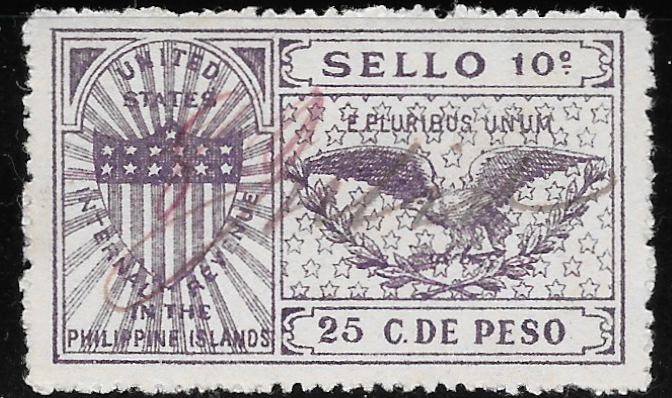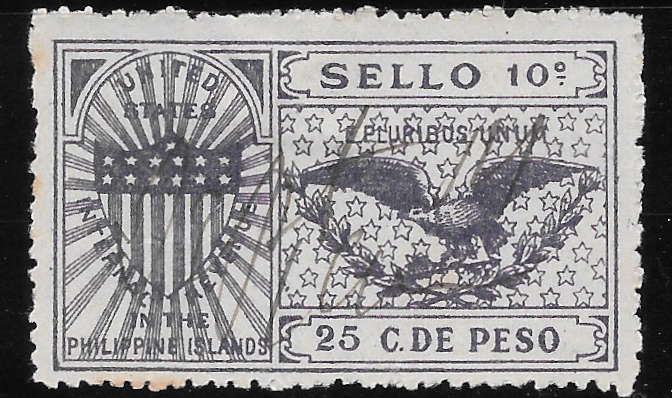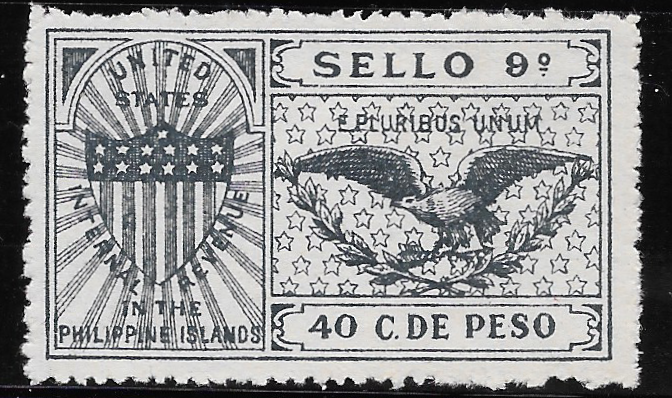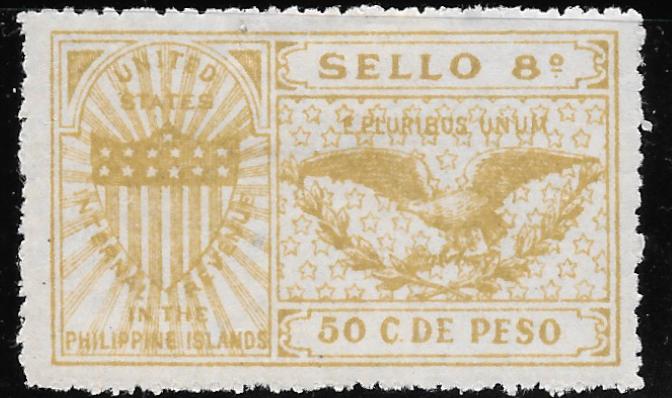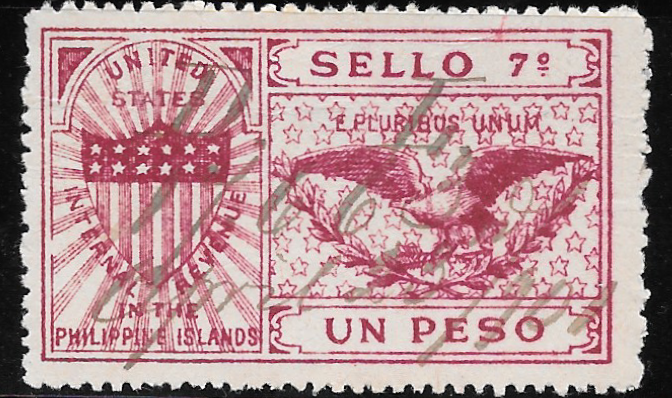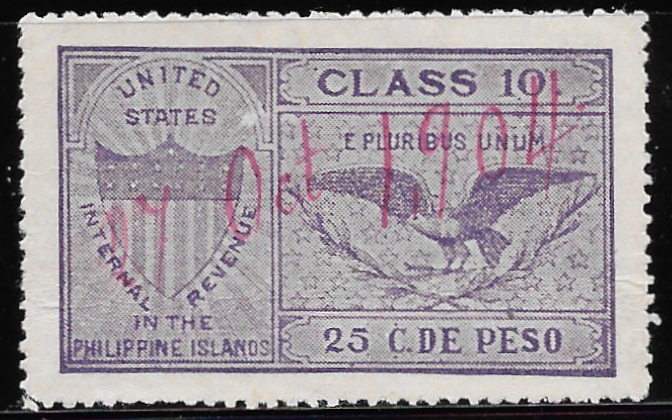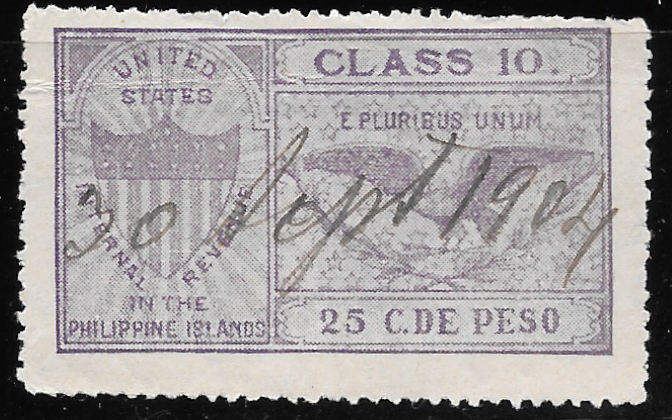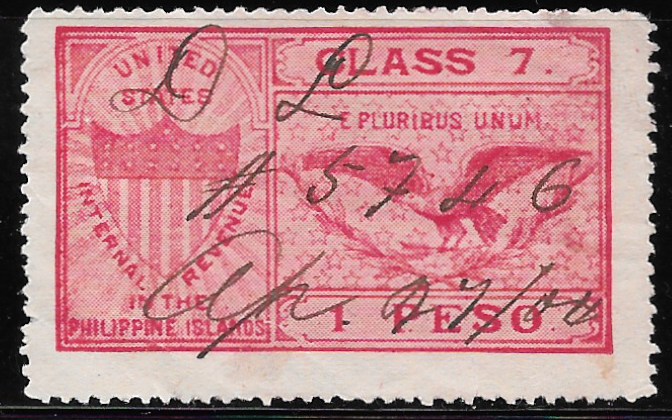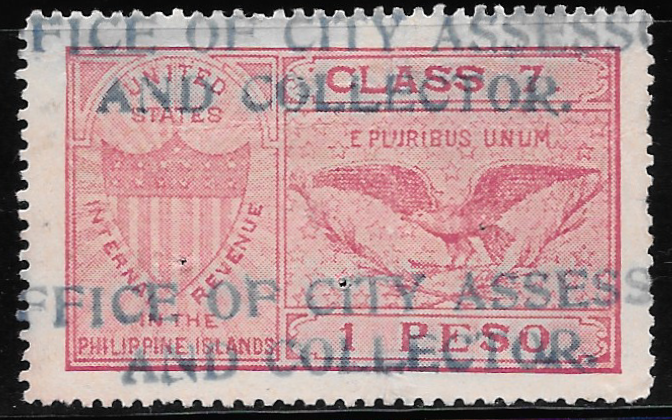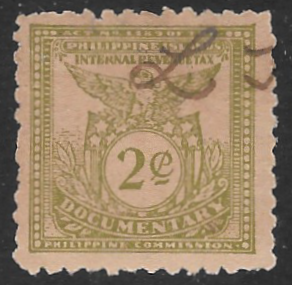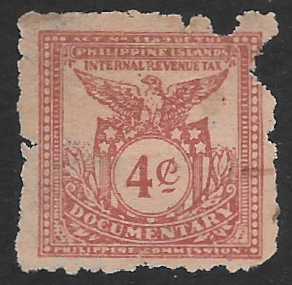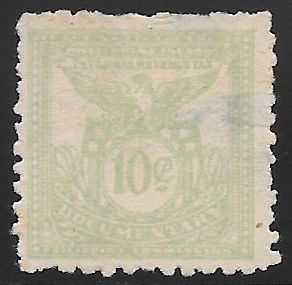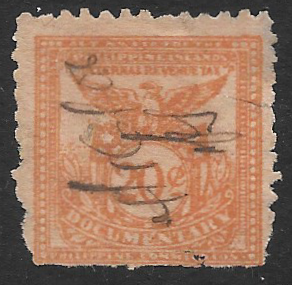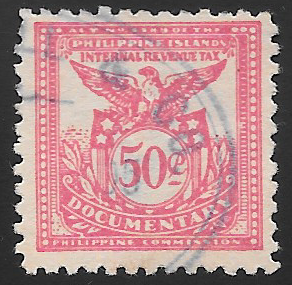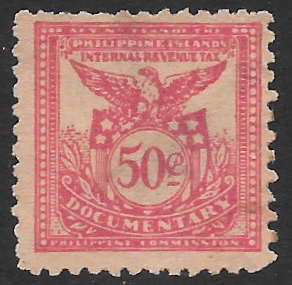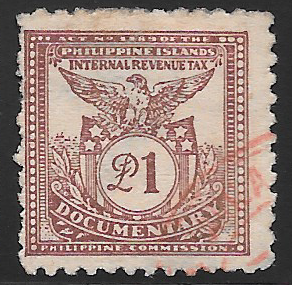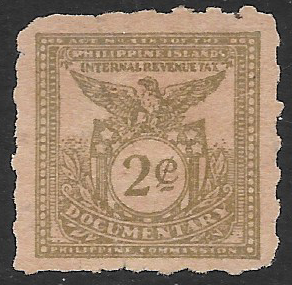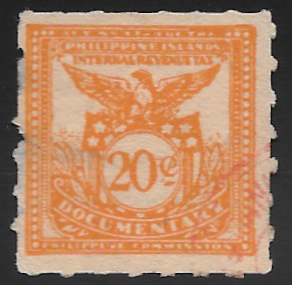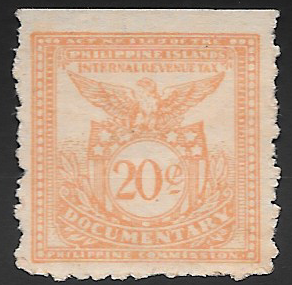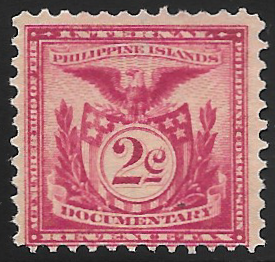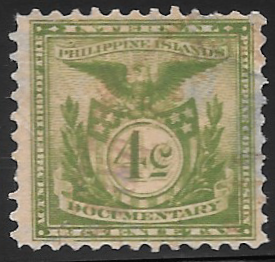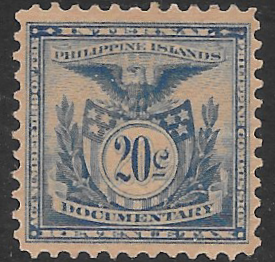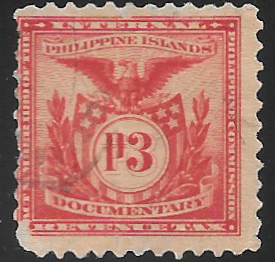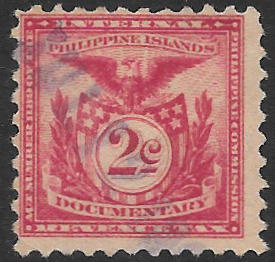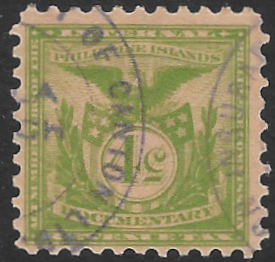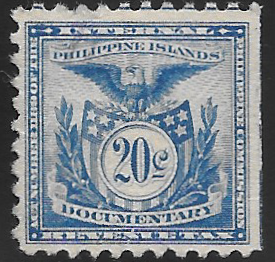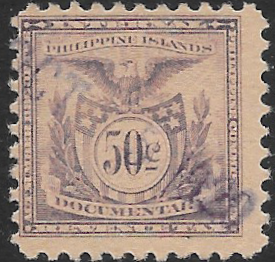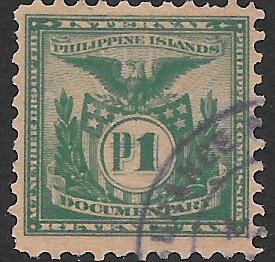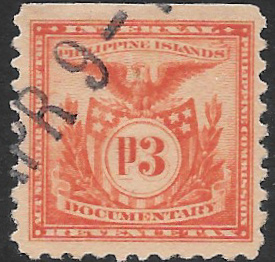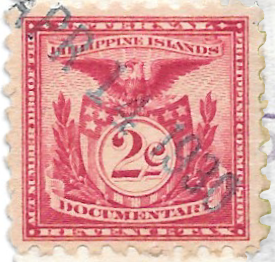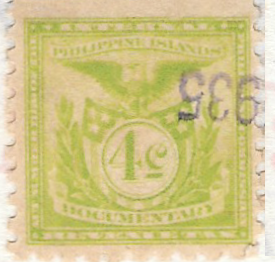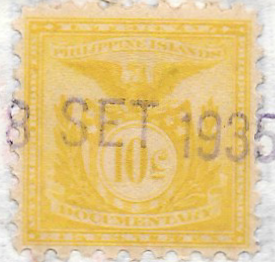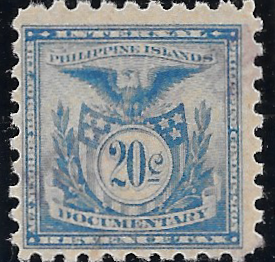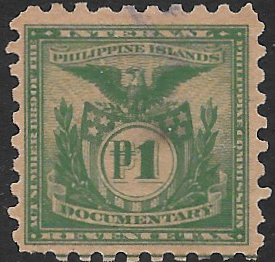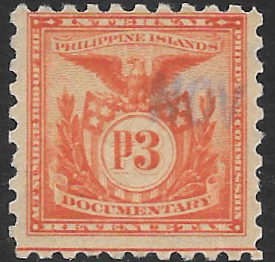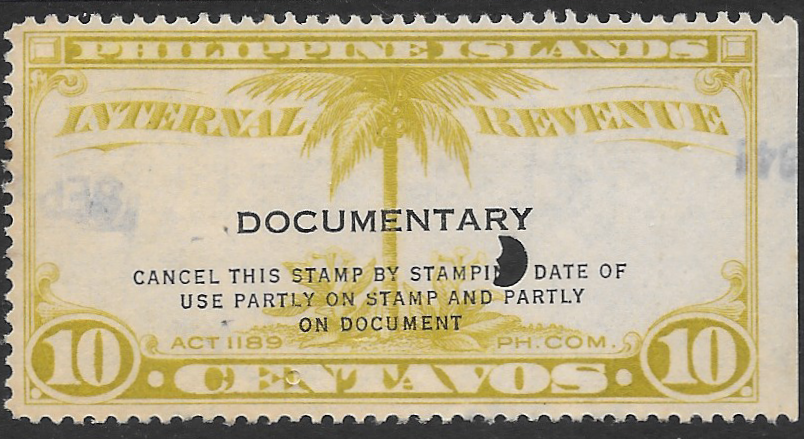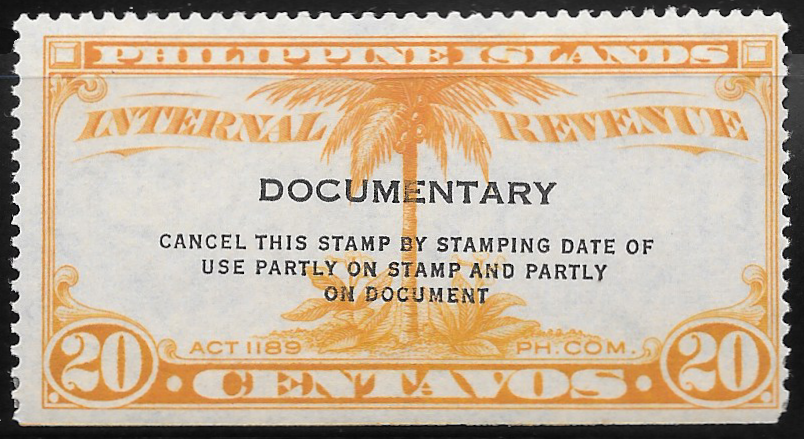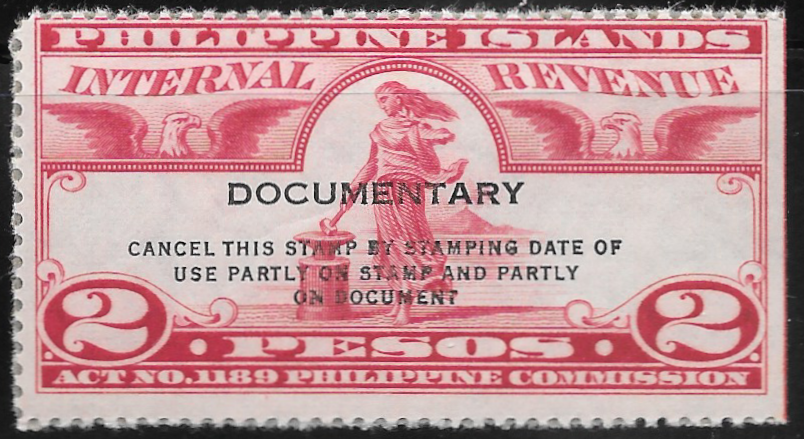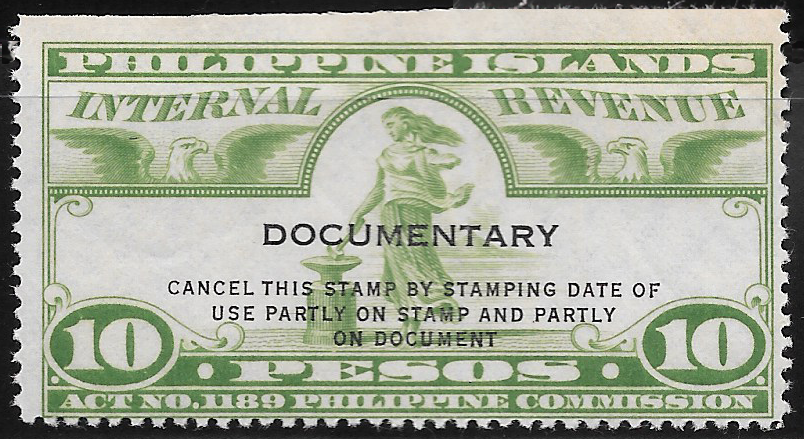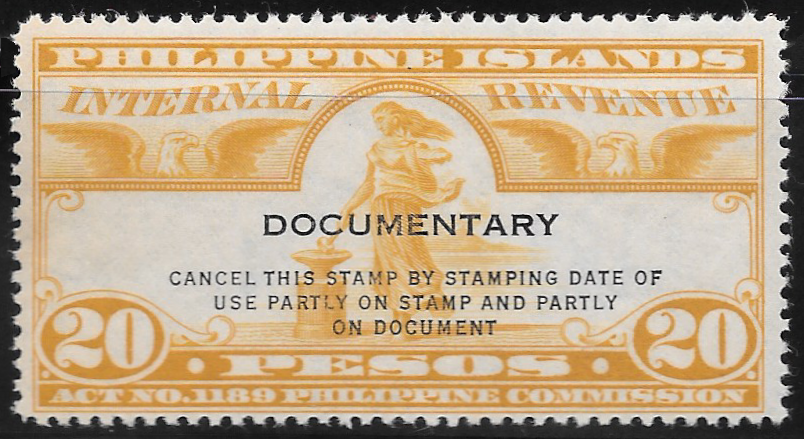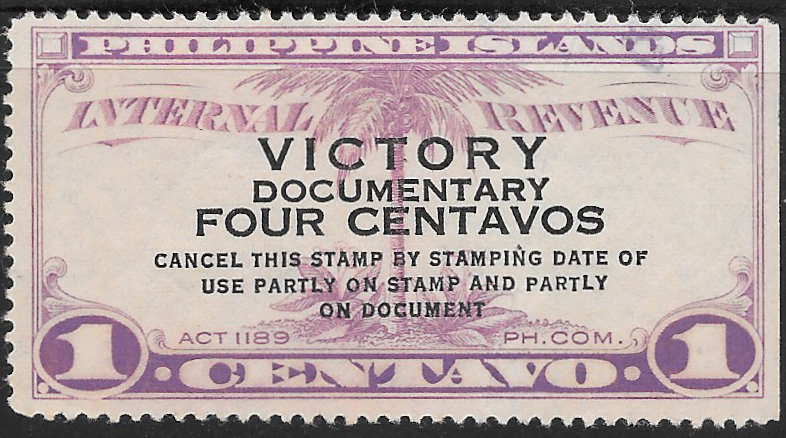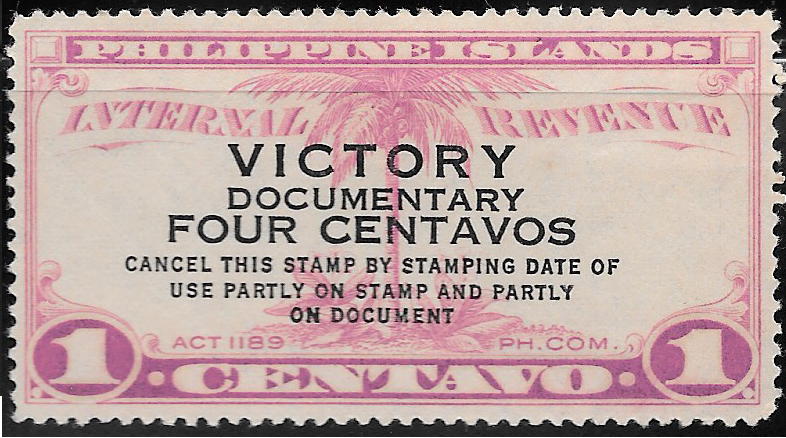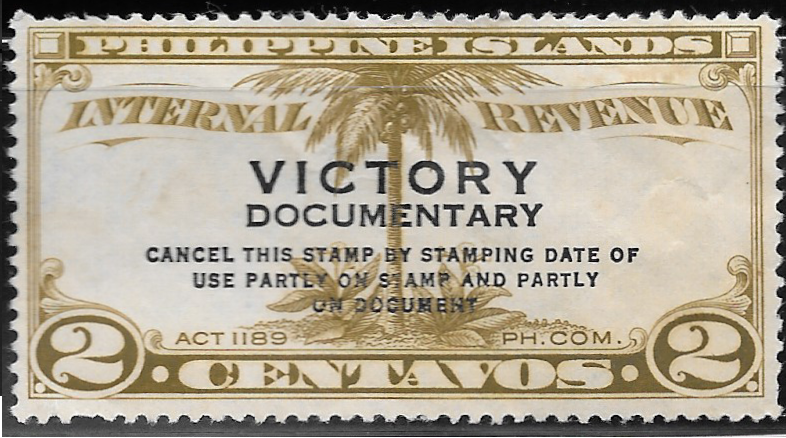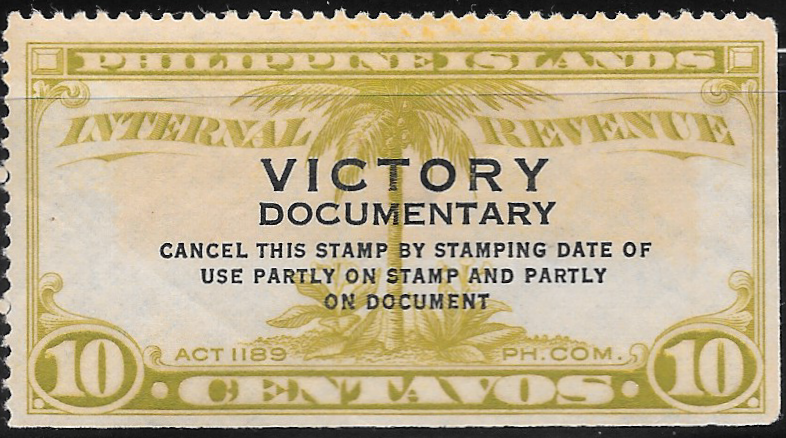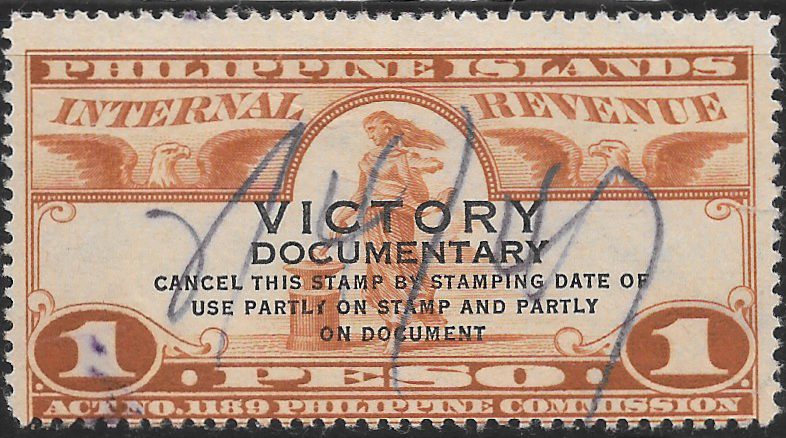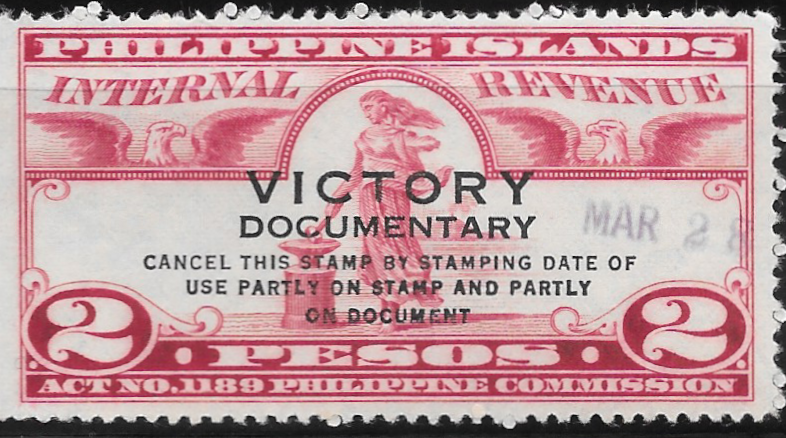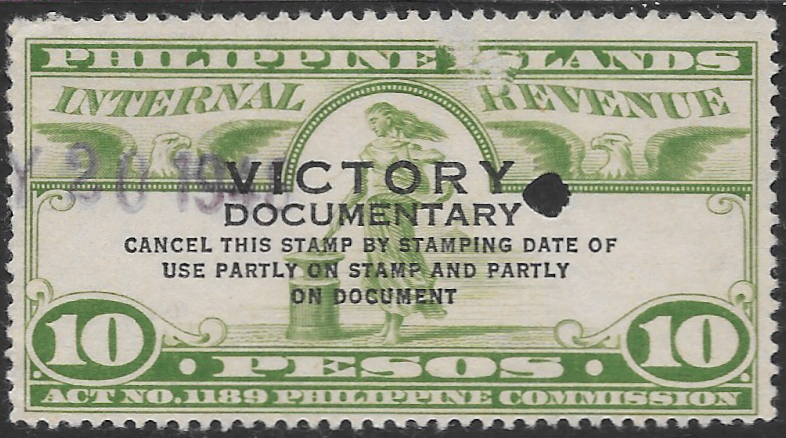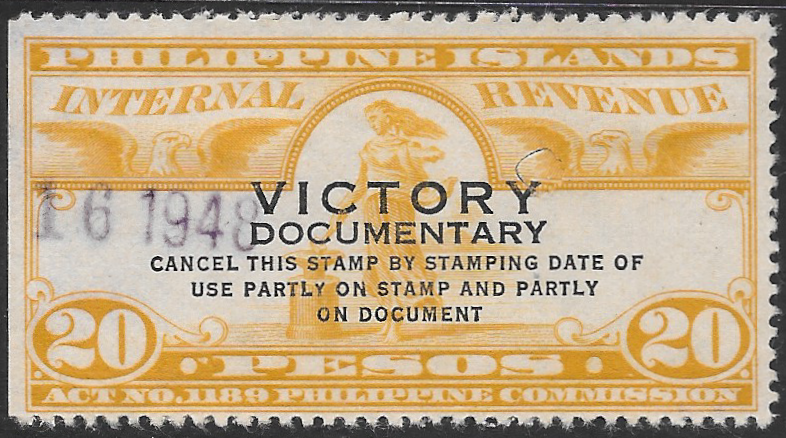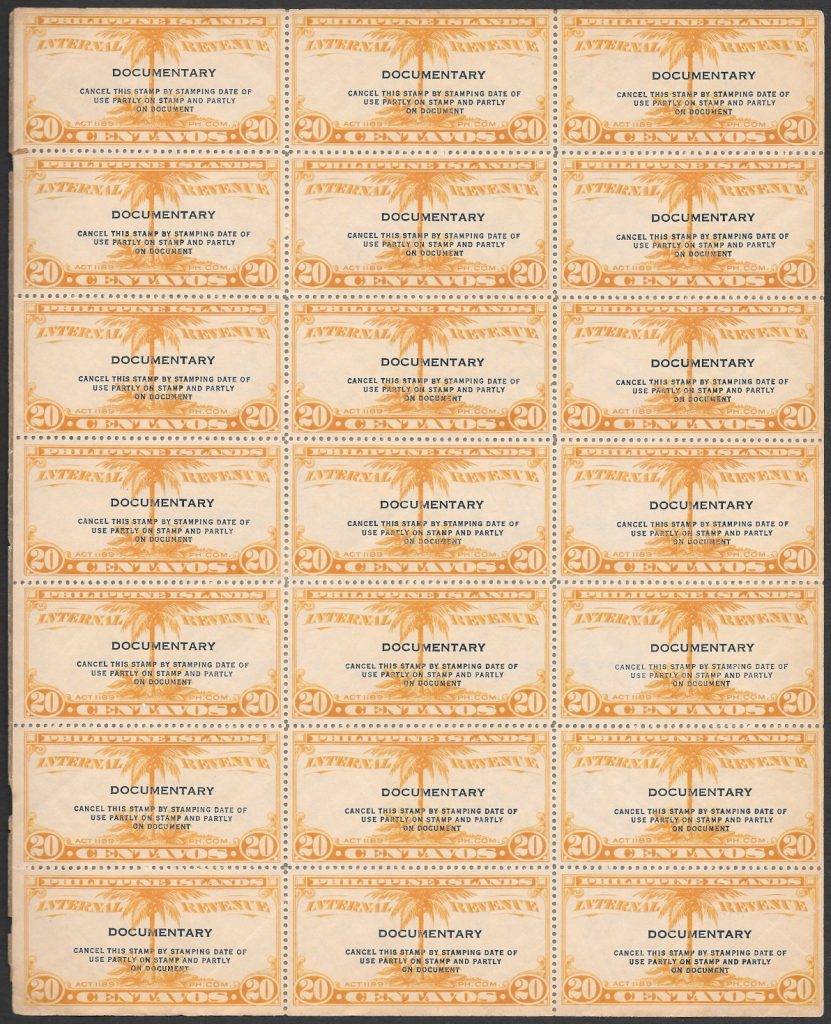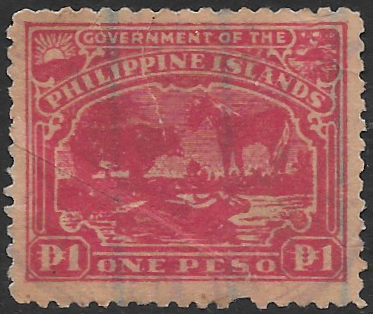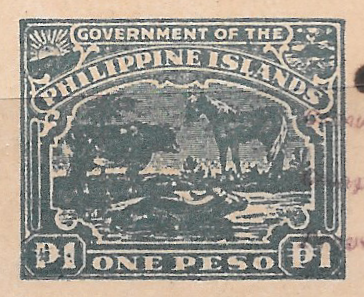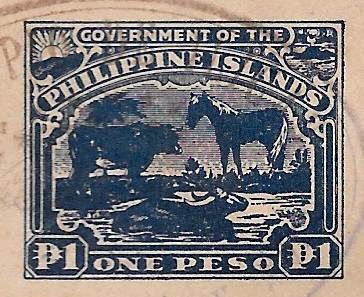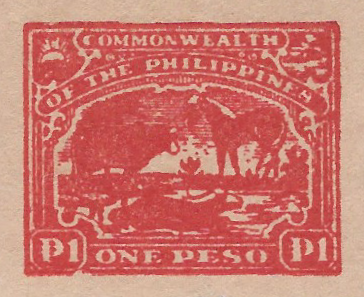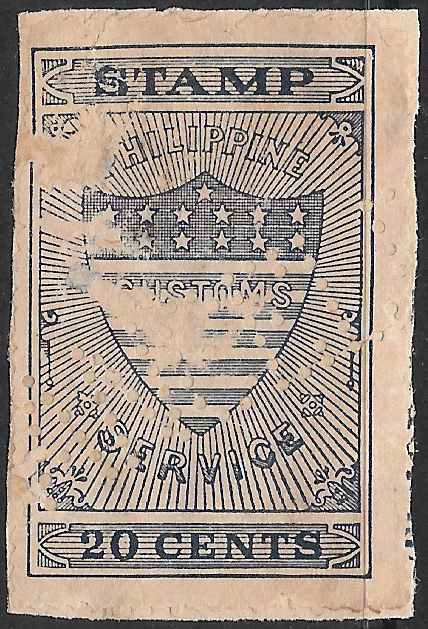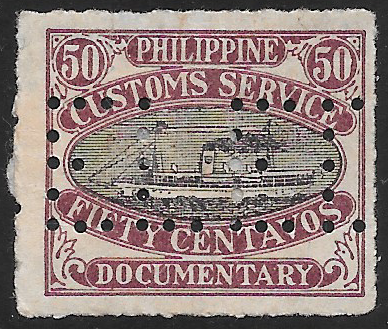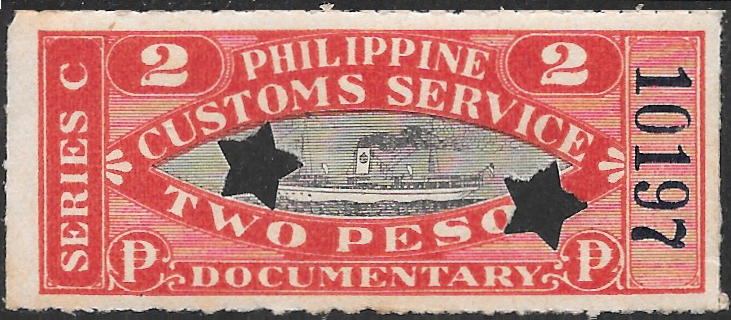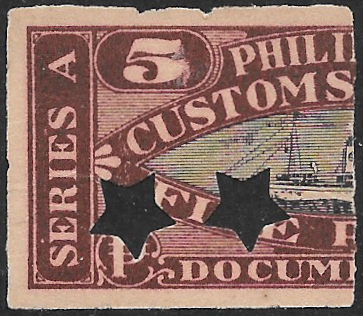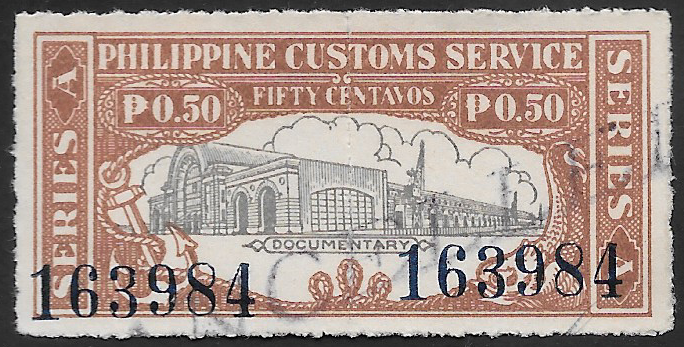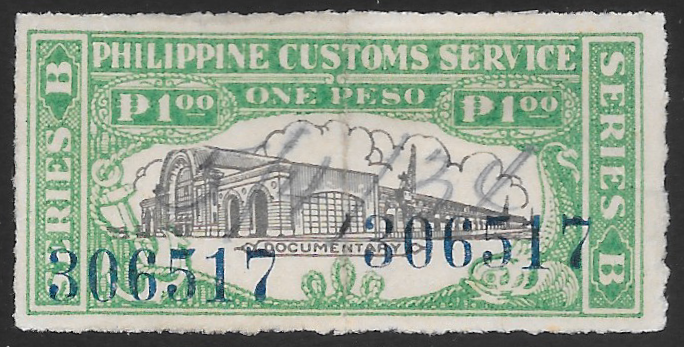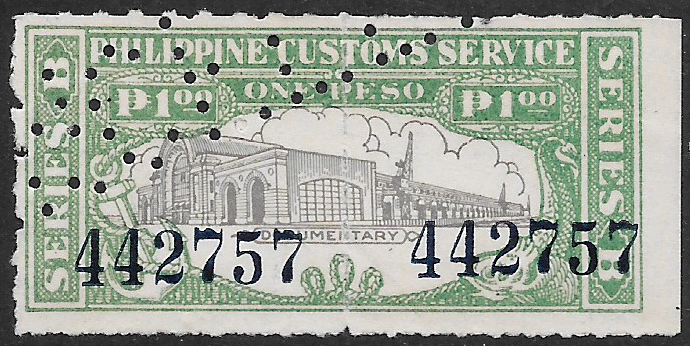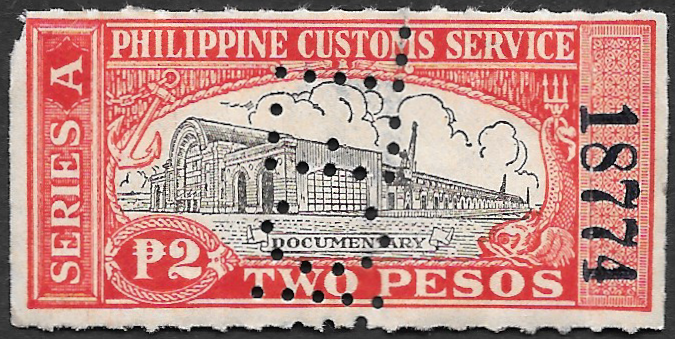Revenue stamps were issued under the U.S. Insular Government and Commonwealth of the Philippines Governments from 1901-1946.

U.S. Administration (1899-1946)
For a short period (1898) interim revenue stamps were used – these were existing Spanish era issues that were initialed in pen by a representative of US government. Starting shortly after in 1899 the U.S. Government printed their own revenue stamps. The U.S. did allow the existing Spanish era stamps to be used up until 1904. The Internal Revenue Law of 1904 provided for general internal revenue taxes, documentary taxes and transfer of livestock. A wide variety of issues exist in denominations ranging from one centavo to 20,000 pesos.
Revenue stamps issued under the U.S Administration are:
- Internal Revenue Stamps
- Documentary Revenue Stamps
- Cattle Registration Stamps
- Customs Stamps
- Drivers License Stamps
- Bureau of Lands Special Stamp
Internal Revenue Stamps
Documentary Revenue Stamps
Interim or provisional documentary revenue stamps were in use from 1898, these were Spanish era Timbre Movil revenue stamps that were initialed by the U.S. Military Government.
In 1938 the BIR issued an Administrative Order decreeing that all documentary stamps were to be cancelled via a punch upon use. This order was not always followed and as such collectors can find used examples with and without the hole punch.
Large Format Full Sheets
Here’s a few quick notes on the large format Documentary Revenue stamps of the 1940’s. These notes are also relevant to the same sized Internal Revenue stamps of the 1930’s.
The large format documentary revenue stamps were released in sheets of only 21 stamps. The limited quantity per sheet is due to the size of each stamp (65x35mm). Sheets are stacked with a waxed paper in between to protect the face of one from the gum of another and to make it easy to separate sheets. This paper is now fused to the majority of full sheets that exist and you will often see it on the back of mint stamps. Due to the print configuration of 3×7 stamps per sheet the majority of stamps will have at least one edge which has not been perforated (a straight or imperforate edge).
From this configuration we can deduce that stamps with 2 straight/imperforate sides should be the hardest to find since only 4 per sheet of 21 were produced (the 4 corners). Stamps with all 4 sides perforated are the next hardest with only 5 per sheet existing (from the center column). Stamps with 3 perforated sides and 1 straight/imperforate side should be the most abundant (12 per sheet).
Of course you could break this down ever further and say that 1 in 21 stamps are a left hand upper corner, or only 1 in 21 stamps has a straight bottom edge, etc. At the end of the day I have not seen straight edges have any bearing or impact on the value of these stamps.
Cattle Registration Stamps
Since a Royal Order dated 1862 it has been compulsory to register the ownership of all large cattle – consisting of horses, cows and carabao. Certificates were handled by barangay officials who would also oversee the branding of the animal. An initial brand identifying the original owner was compulsory, additional brands for new owners after cattle changed hands were optional. The barangay kept transfer logs in a Cattle Register and would charge a small fee for services. Interestingly, revenue stamps were not used during the Spanish era for cattle registration. Stamps were produced under the First Revolutionary Government in 1898 (Trans de Ganados stamps) but were not widely used. It was not until 1904 that revenue stamps for cattle sale/transfer were adopted during the U.S. Administration. Stamps were initially affixed to paper but were later pre-printed onto the registration paperwork.
Standalone revenue stamps for cattle registration had a short-lived usage. In 1906 cattle registration revenue stamps were disbanded and instead printed stamped paper was used. Paper stamped in red was for initial owner registration and blue was used for transfers. Due to the printing process collectors may notice various shades of red and blue available. Designs changed only slightly since the first stamp was released in 1904. In 1935 the stamp design was changed to read “Commonwealth of the Philippines”. From 1943-1944 they read “Philippine Executive Commission” while earlier stamps and those from 1945-1946 read “Government of the Philippine Islands”.
The requirement to register cattle still continues in the Philippines.
Complete Cattle Registration Certificates:


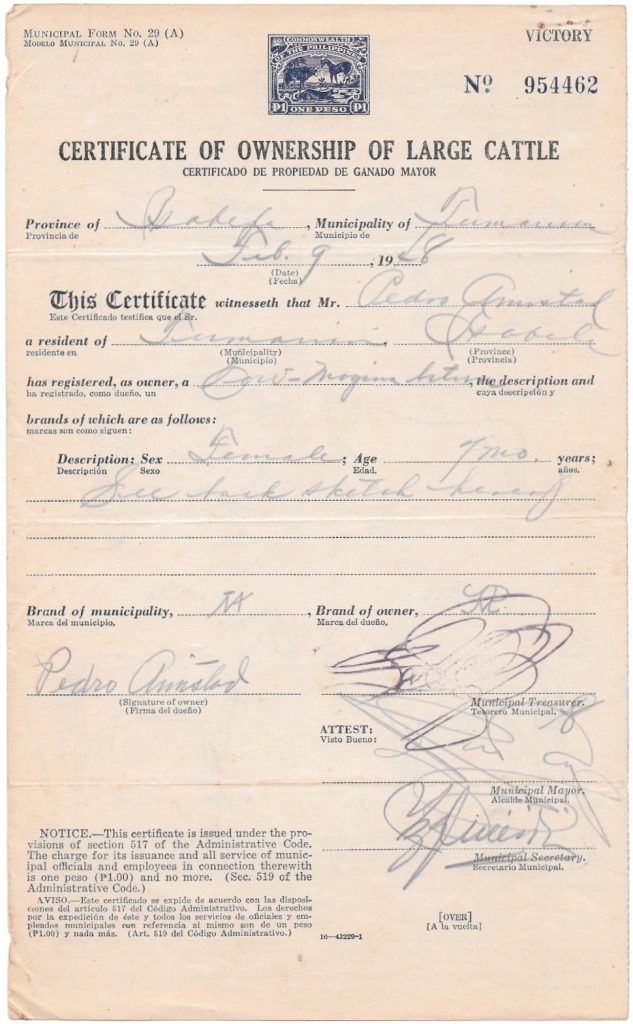


Customs Stamps
Act 355 of 1902 allowed for special U.S. customs stamps to be produced. Prior to this Act the earlier Spanish customs stamps were still widely in use. Other Spanish era internal revenue and sello stamps were also used as early U.S. customs revenue stamps and were hand-stamped with the word “CUSTOMS” on them.
Driver’s License Stamps
From 1922 every driver required a driver’s license which was renewed annually. The Director of Public Works was responsible for issuing these driver’s licenses. Driver’s license costs were 3pesos for a private driver’s license (owner of a vehicle for private use), 5p for a professional chauffeur, 5p for the owner of 1 or more hire vehicles, 5p for anyone renewing their license after the renewal date (or 10p for a chauffeur). All driver’s licenses expired on the last working day of February every year. Driver’s license stamps were only used in 1922 and 1923. Half of each stamp was affixed to the license, the other was kept by the Department of Public Works. For this reason very few examples exist today, exacerbated by the fact that licenses were surrendered on renewal and replaced with newer, stamp free licenses over time.
| Year/s | Note/s |
|---|---|
| 1922-1923 | 49mm x 26mm, rouletted stamps with identical left and right portions and control numbers in red. 2p emerald green, 5p pale ultramarine. |
| No stamps in collection yet |
Bureau of Lands Special Stamp
Issued in 1928 to collect fees associated with the collection of affidavits/oaths/other proof under the the Public Land Law. Homesteaders had to prove that they had complied with regulations around occupancy and land cultivation in order to be issued with a land title. A single revenue stamp of 50c was created and was charged for each affidavit and for each deposition of the applicant or witness.
| Year/s | Note/s |
|---|---|
| 1928-1941 | 45mm x 38mm, rouletted. The only stamp issued by the Department of Agriculture and Natural resources. 50c deep blue with red control number following the letter “A”. |
| No stamps in collection yet |

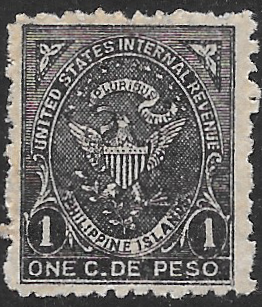
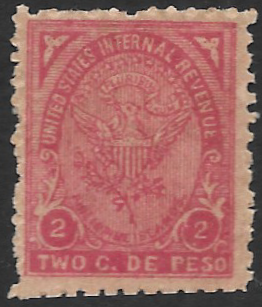
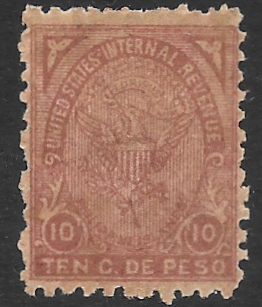
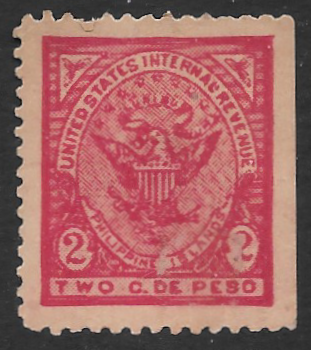
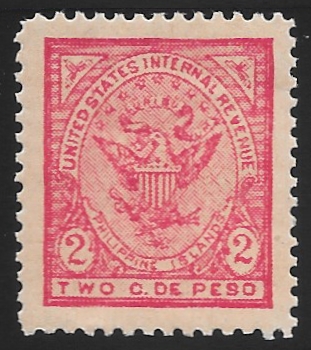

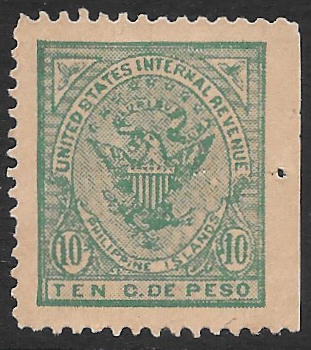
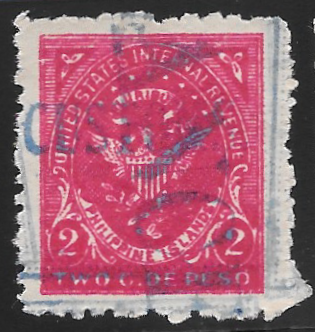
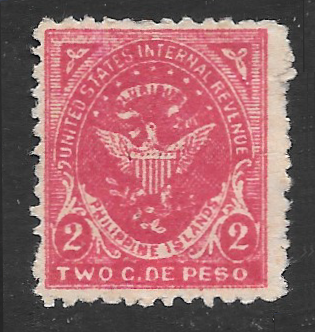
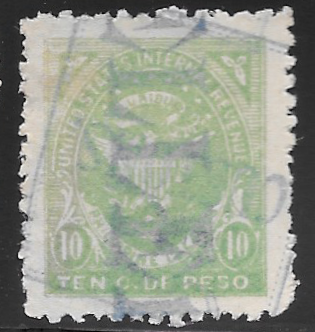
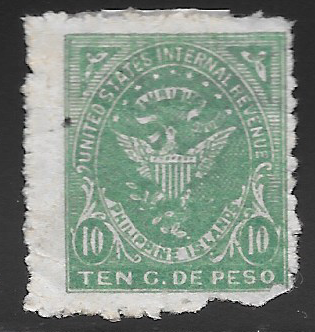
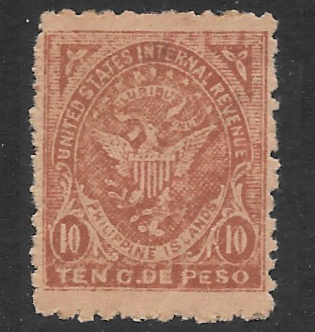
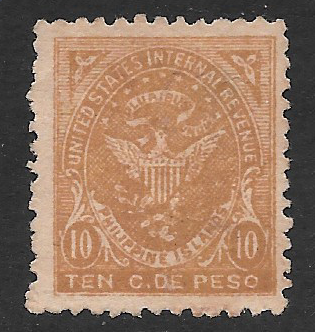
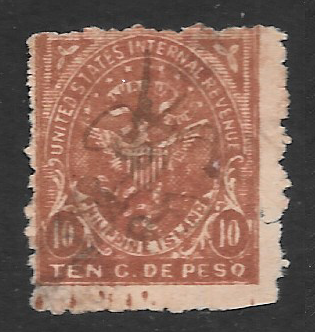
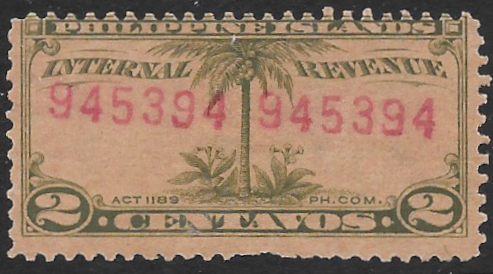
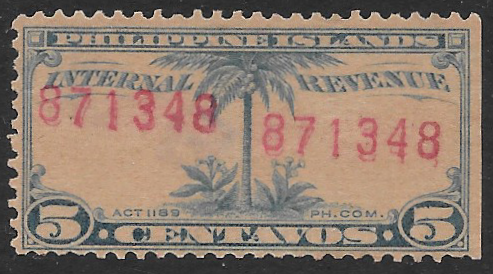
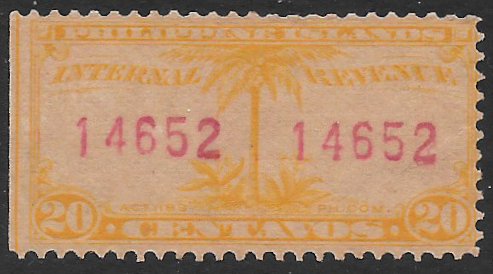
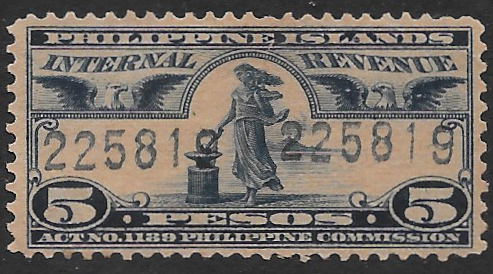
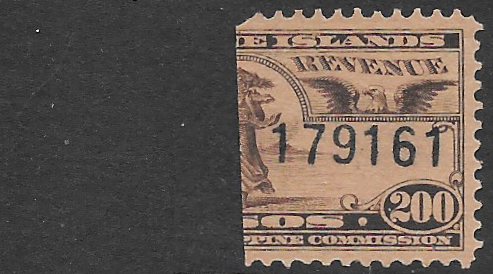
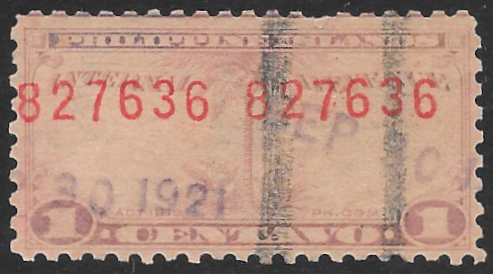

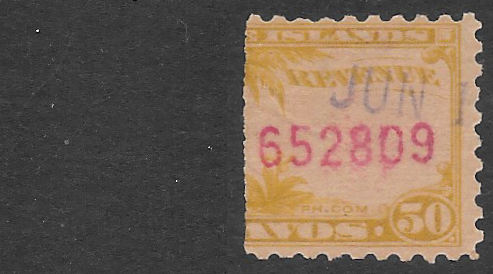
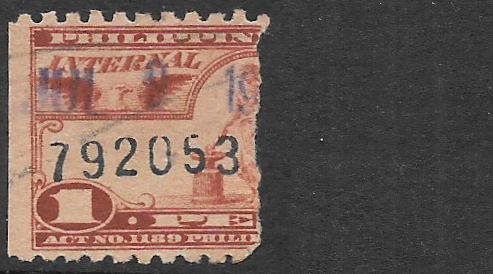

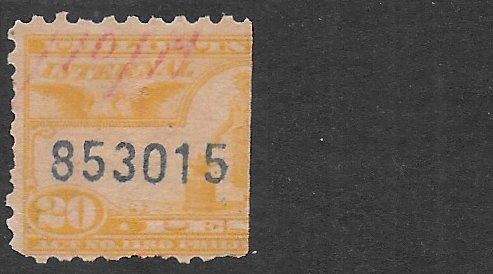
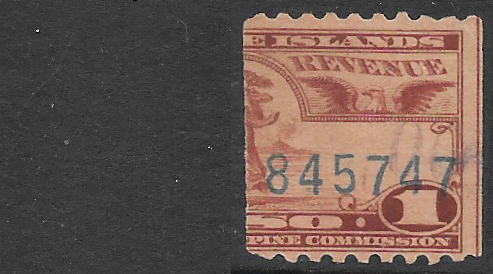

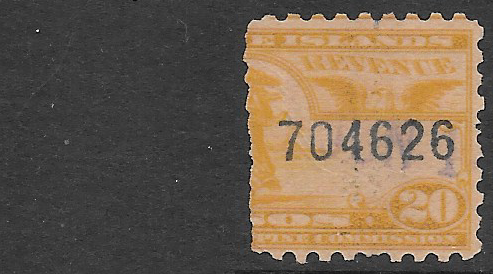
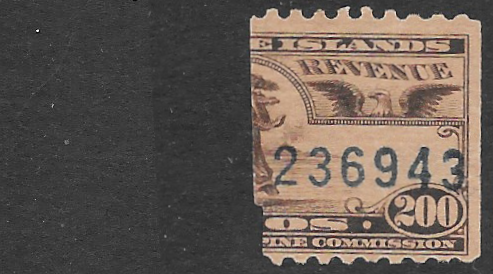
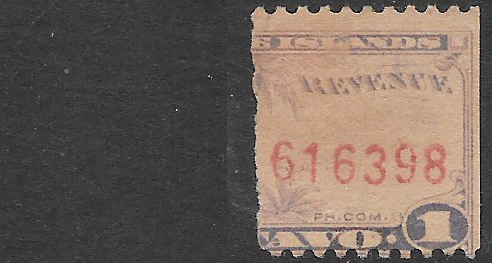
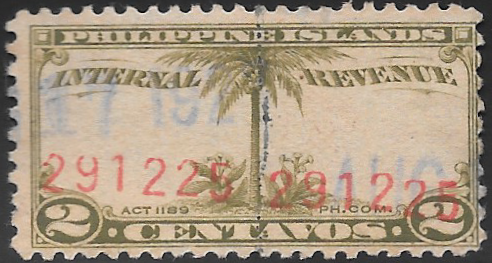
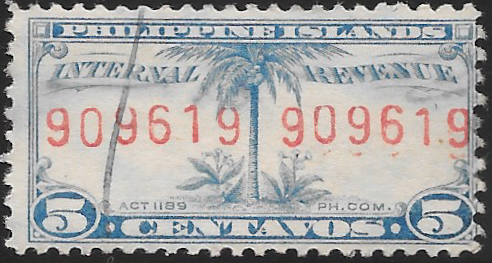
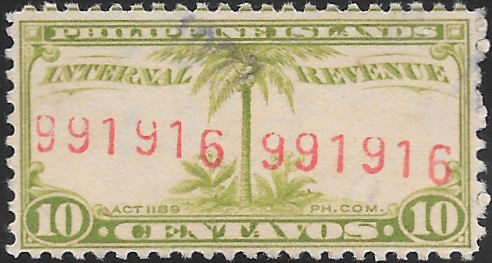
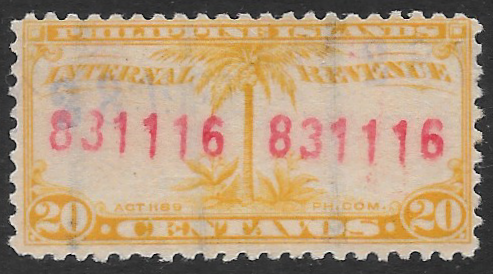
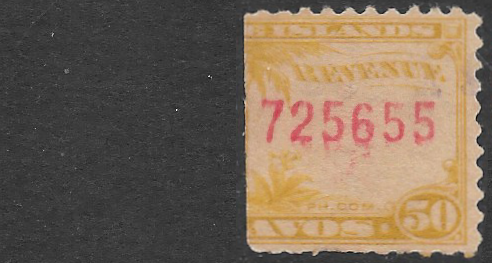
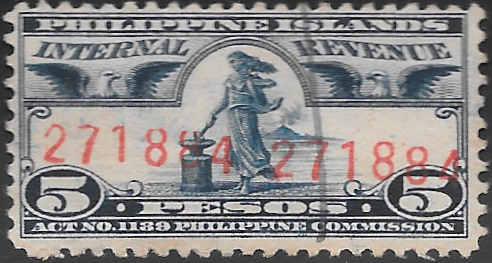
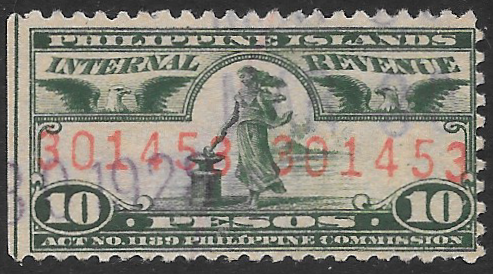
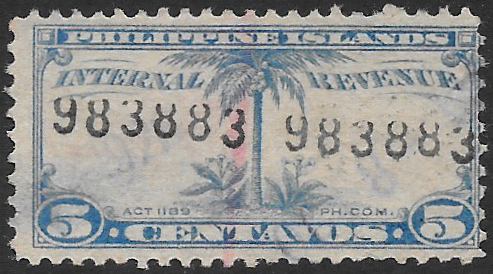
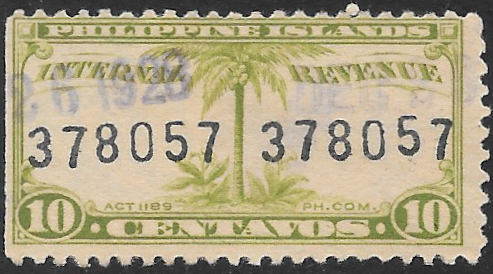
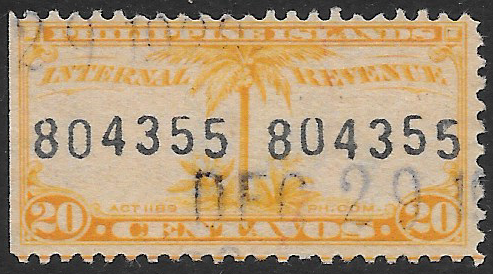
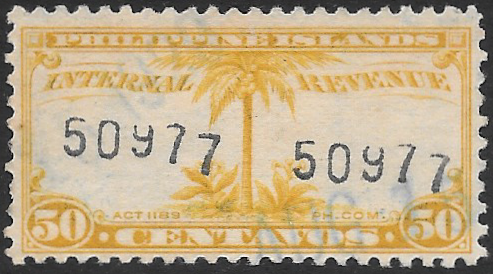
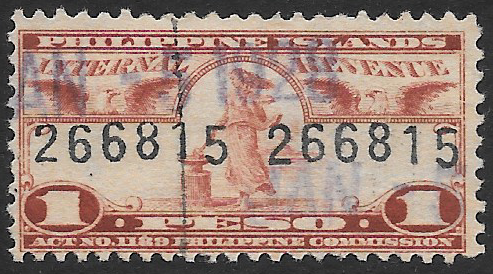
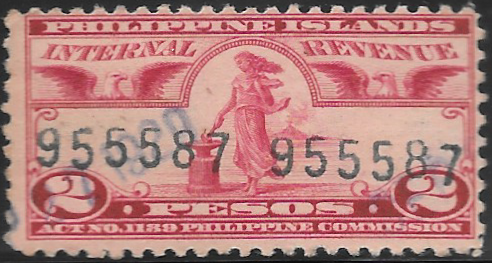
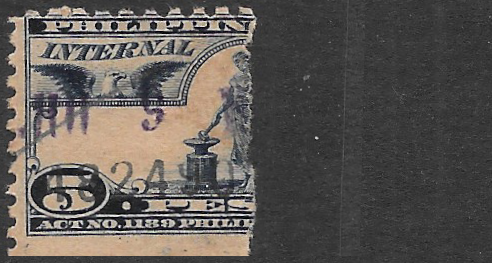
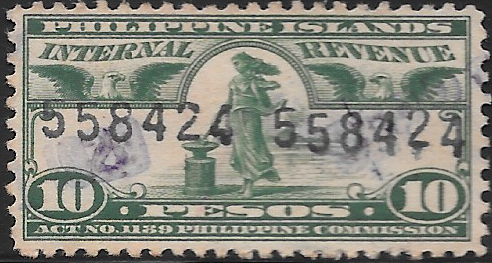
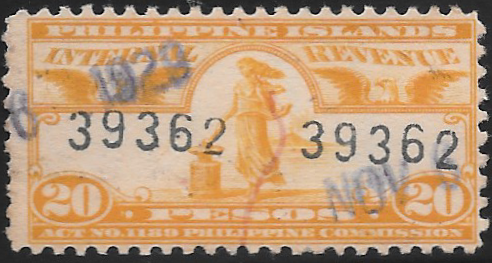
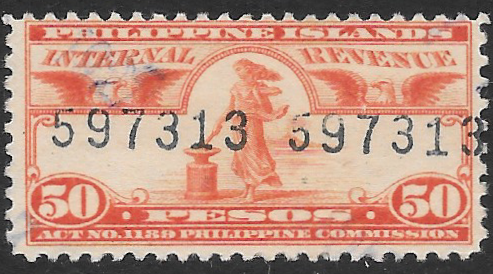
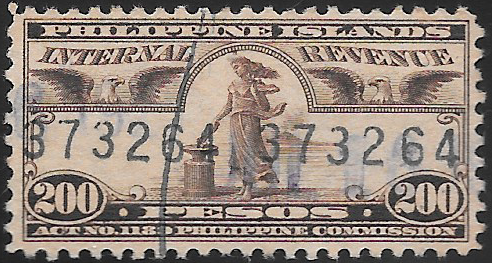
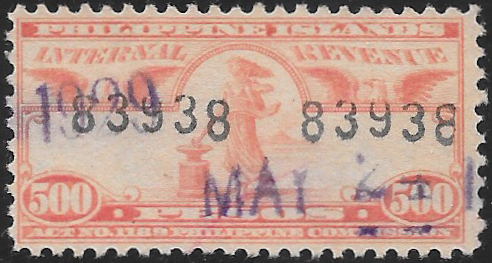
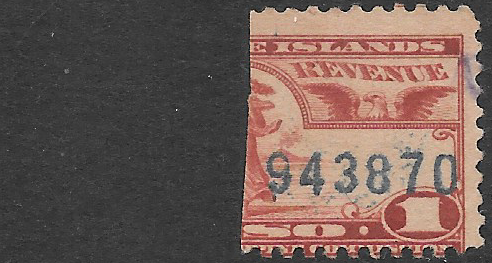
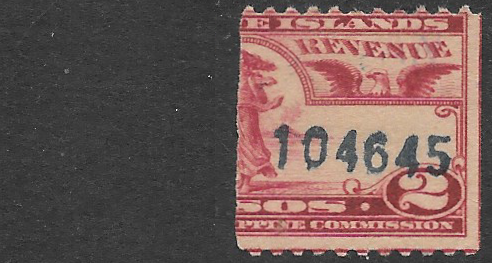

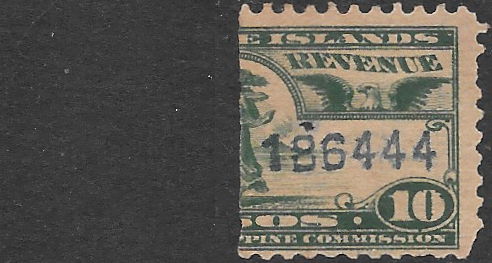
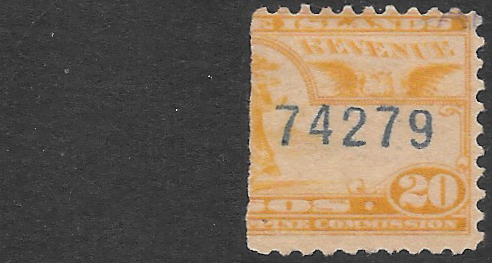
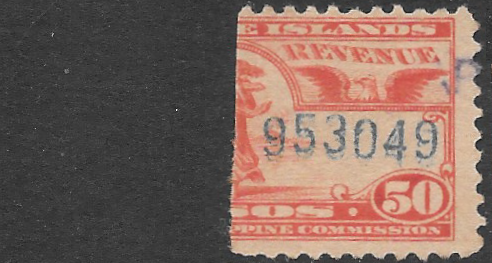
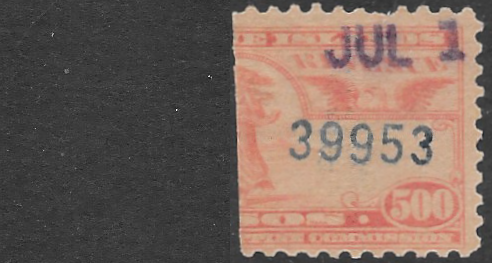

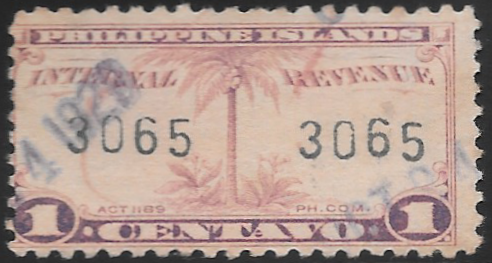
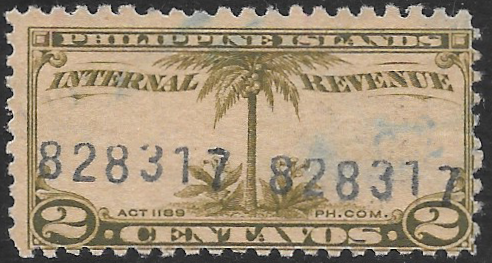
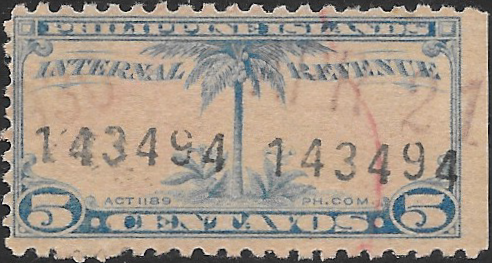
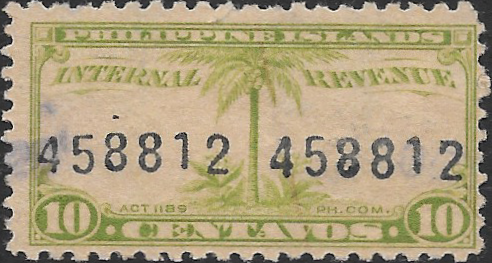
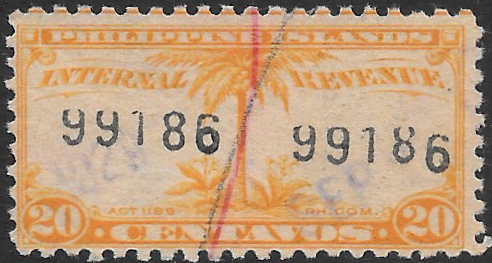
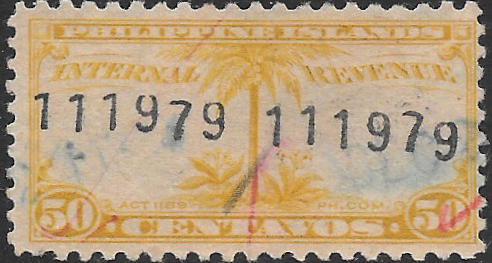
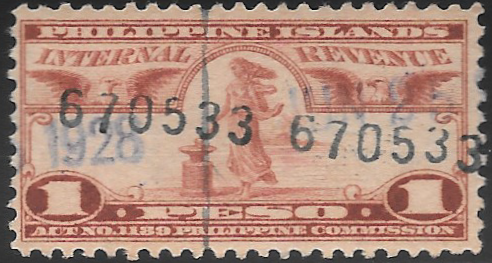
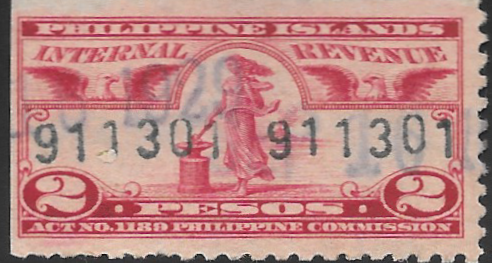
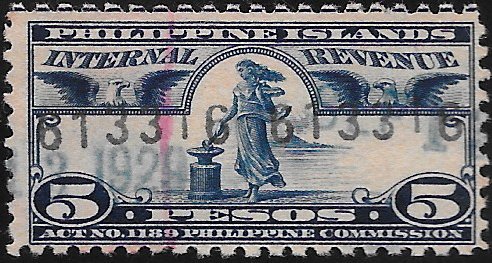

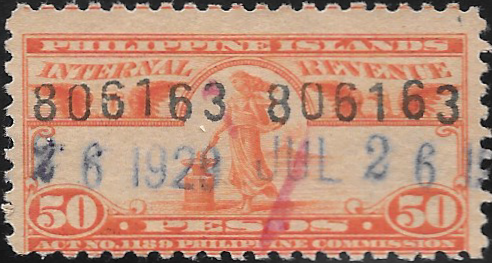
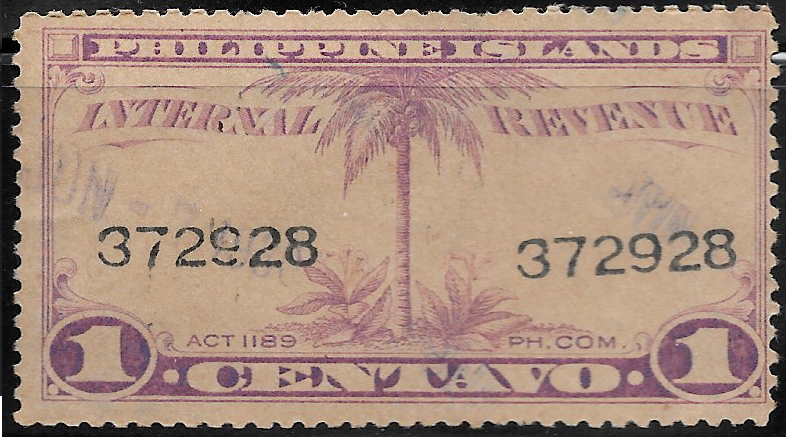

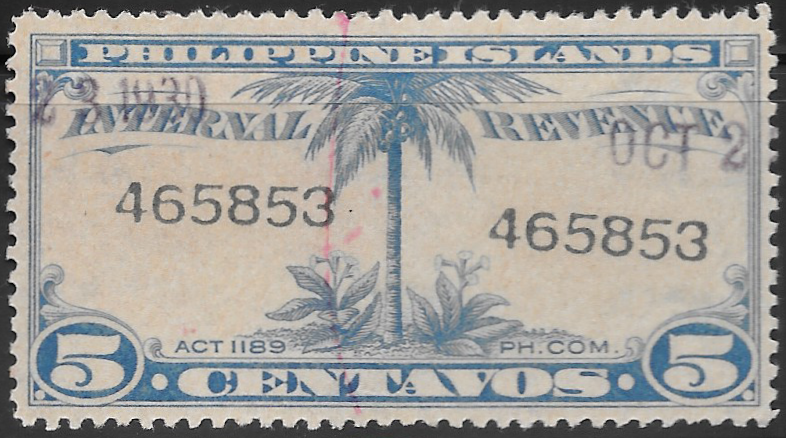
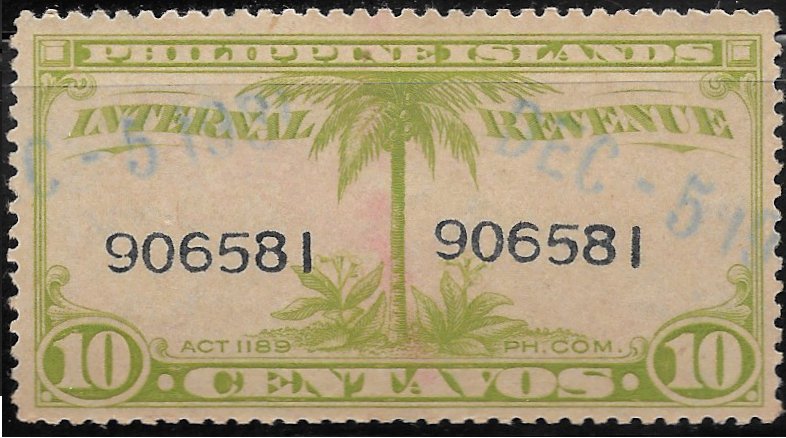
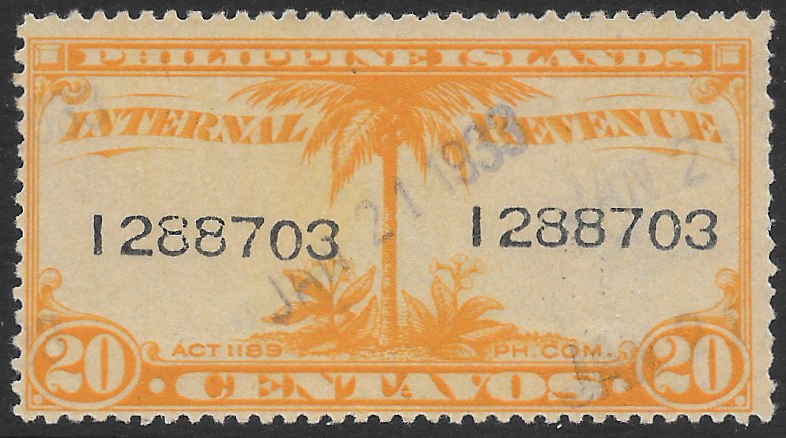
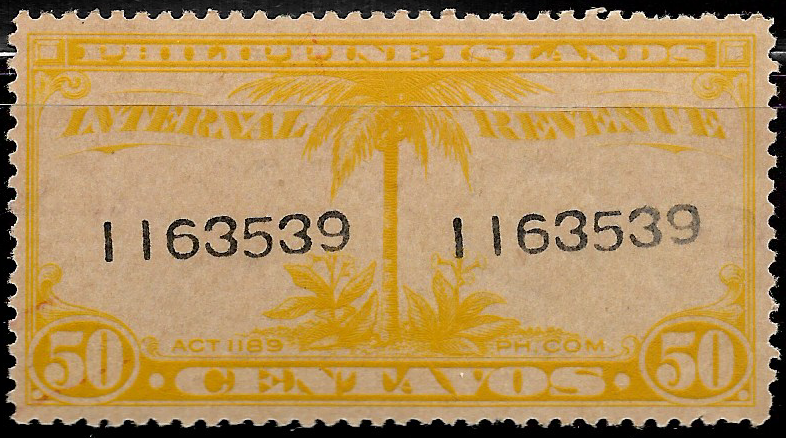



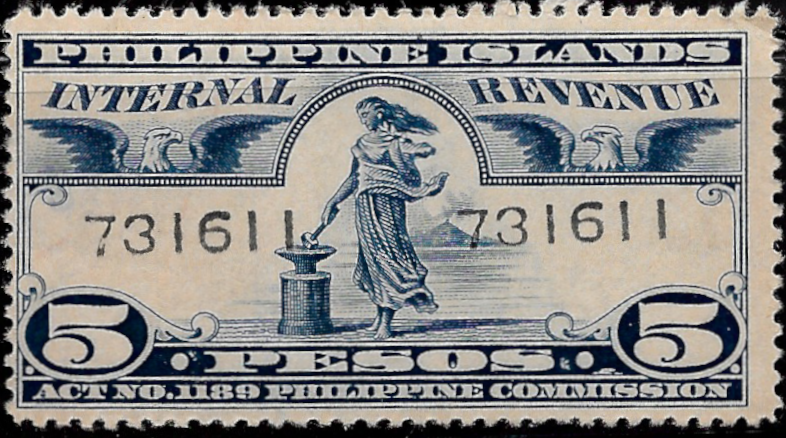
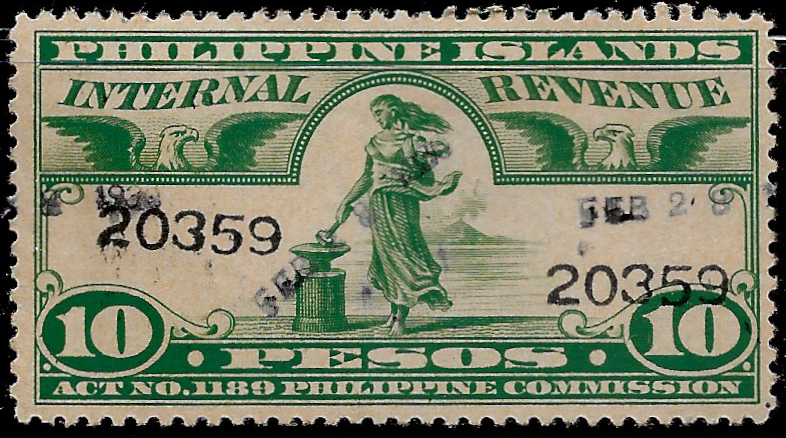
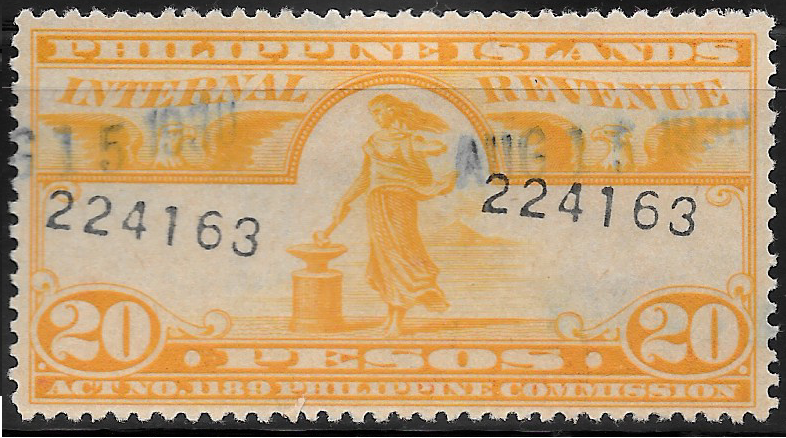
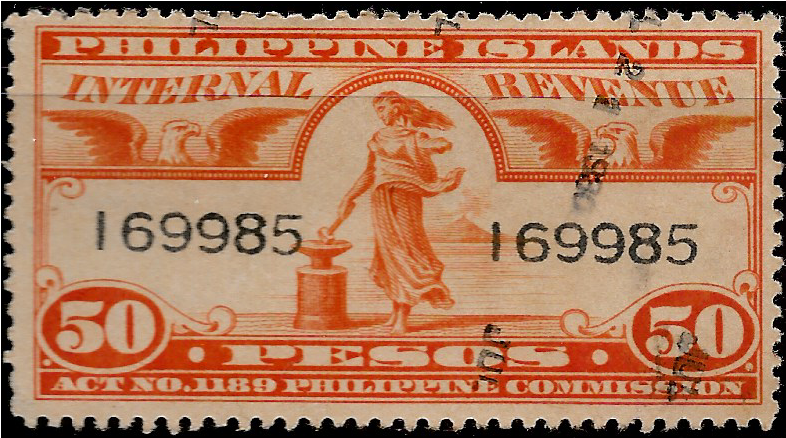
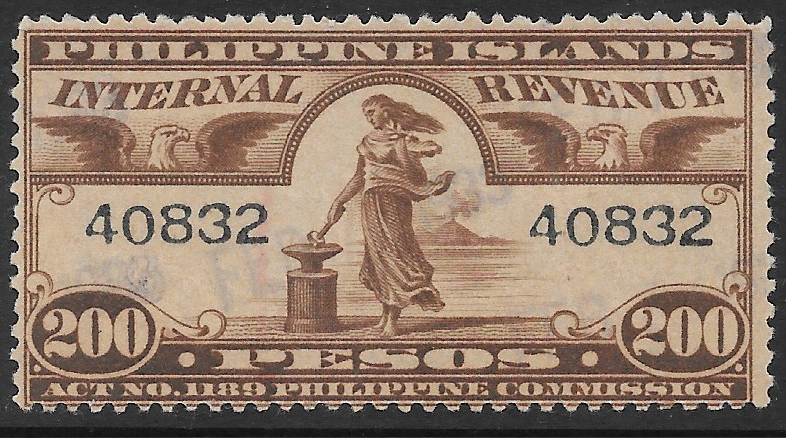

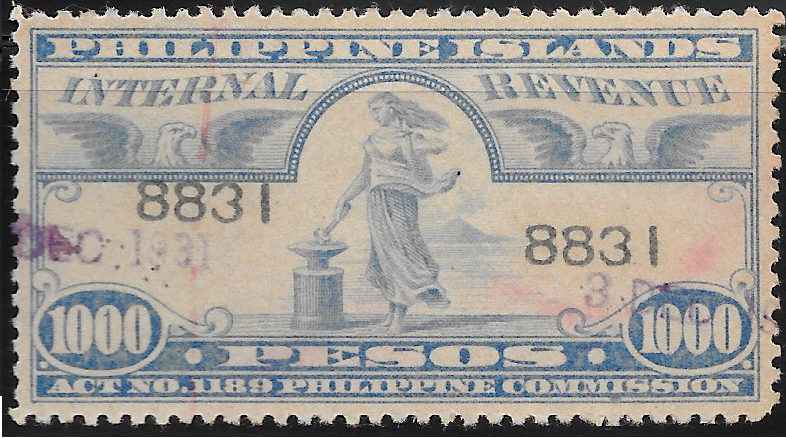


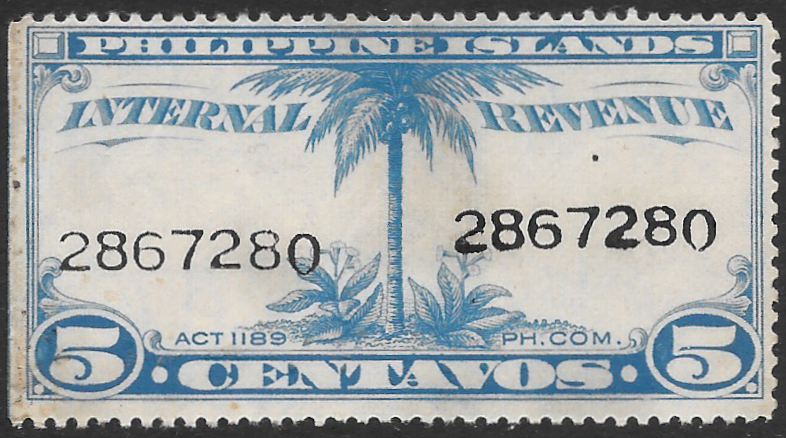
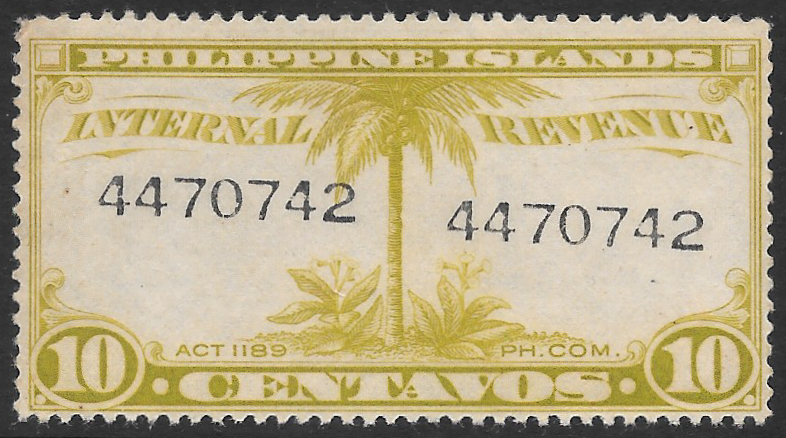
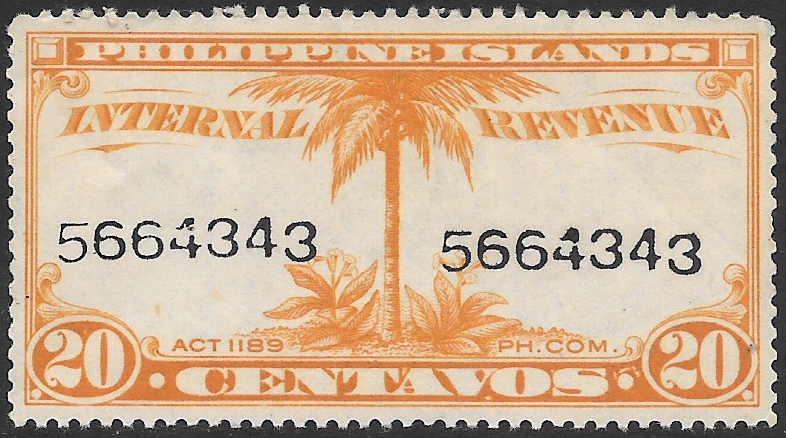
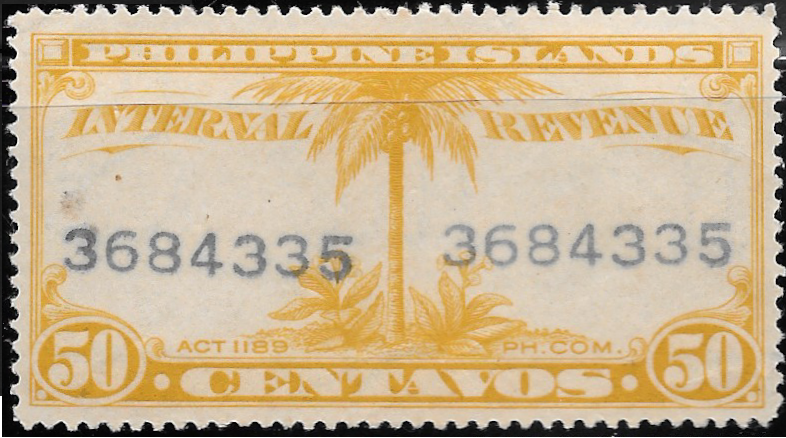

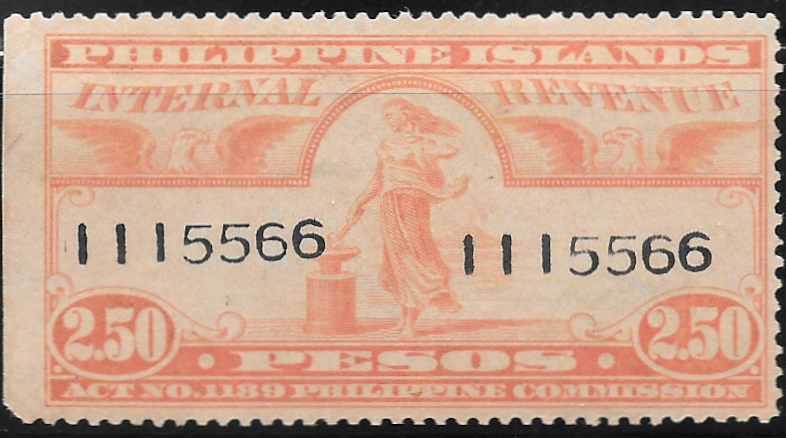


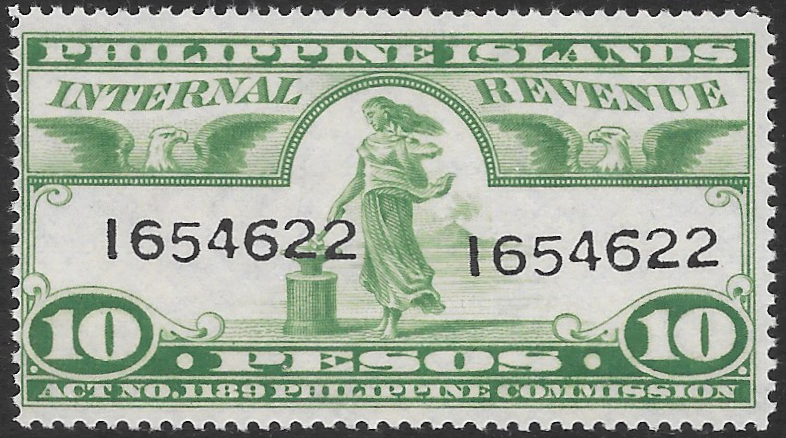
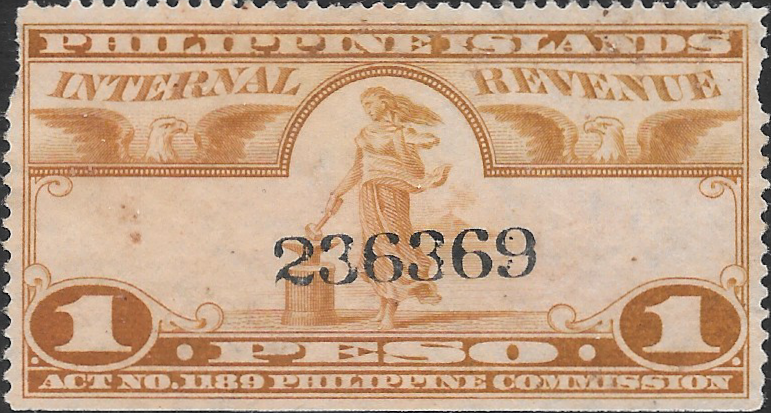
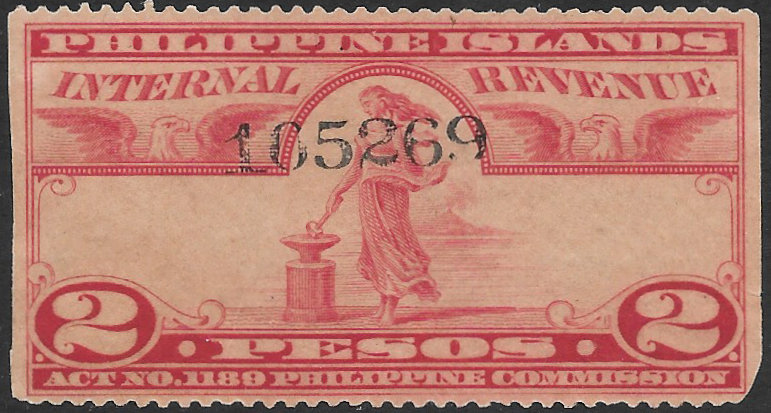
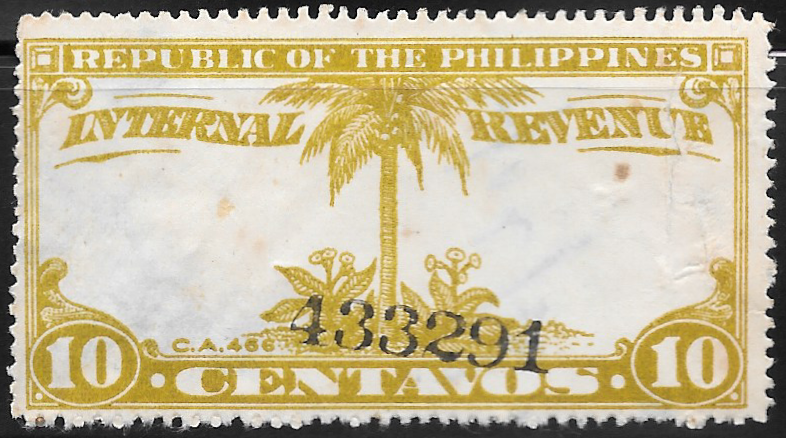
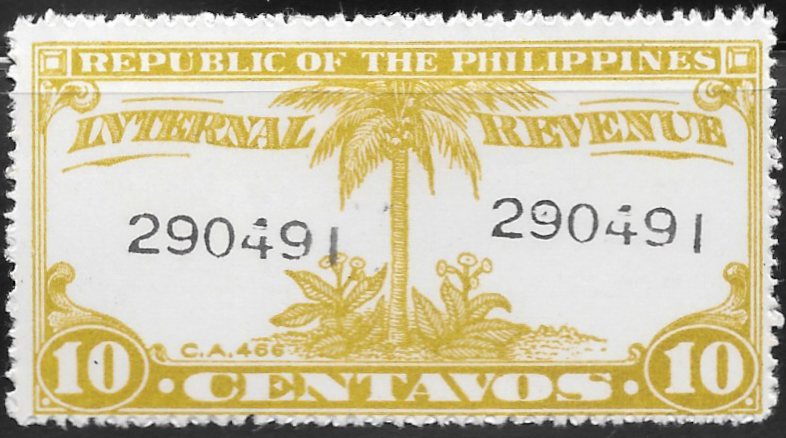
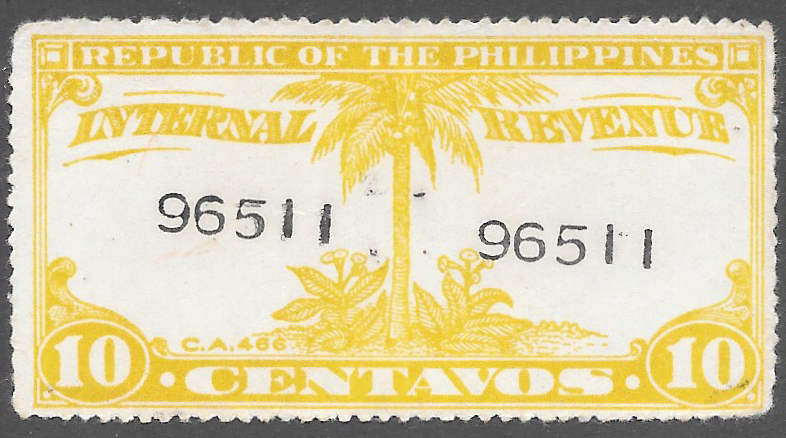
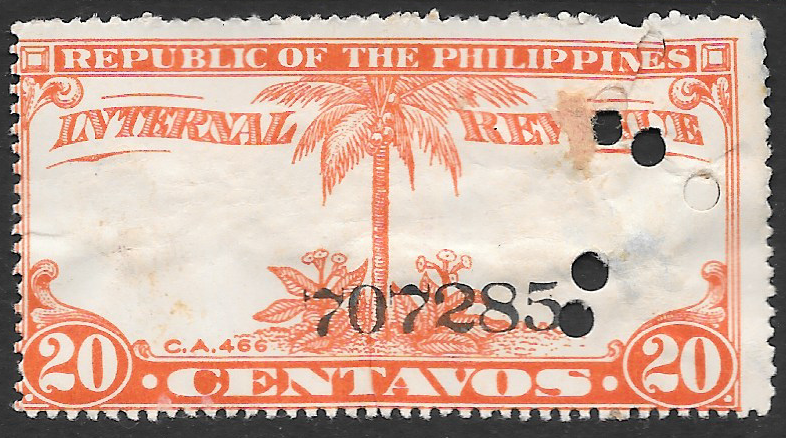
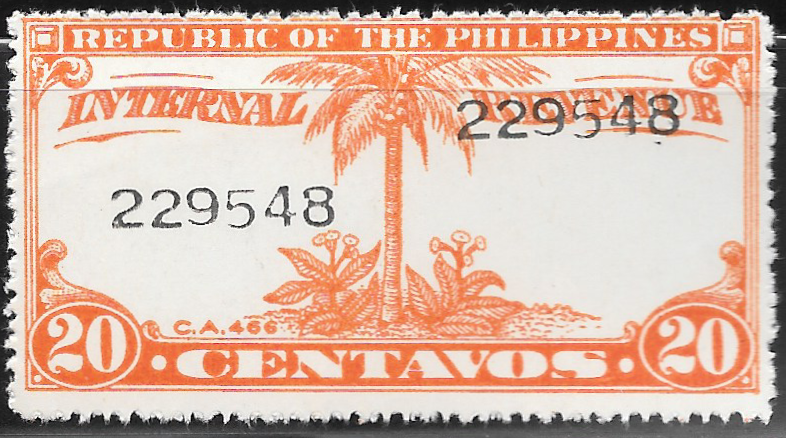

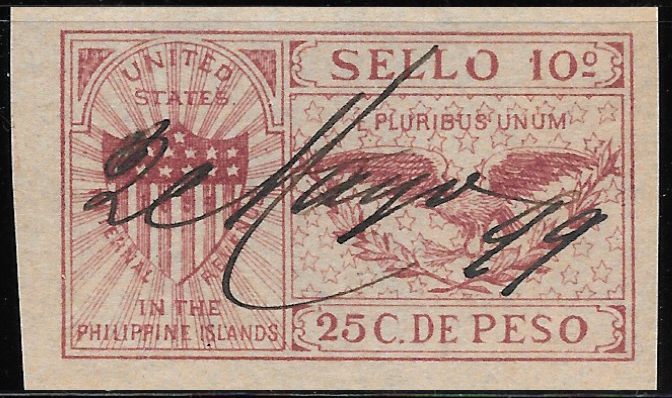
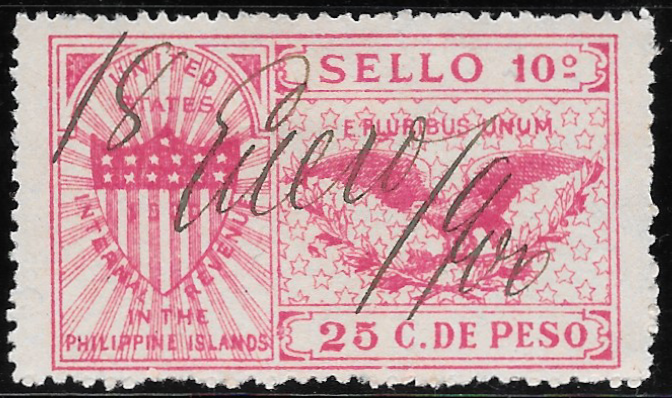
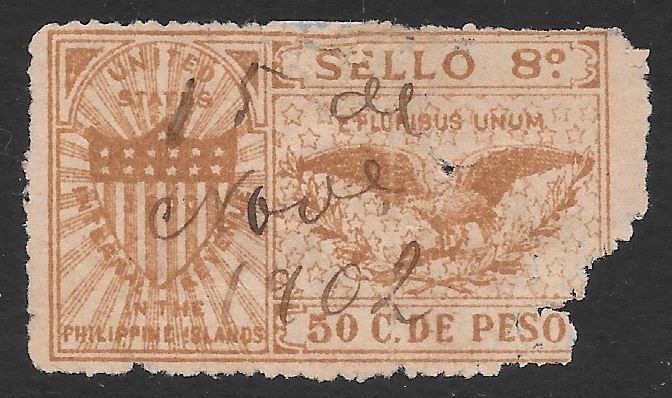
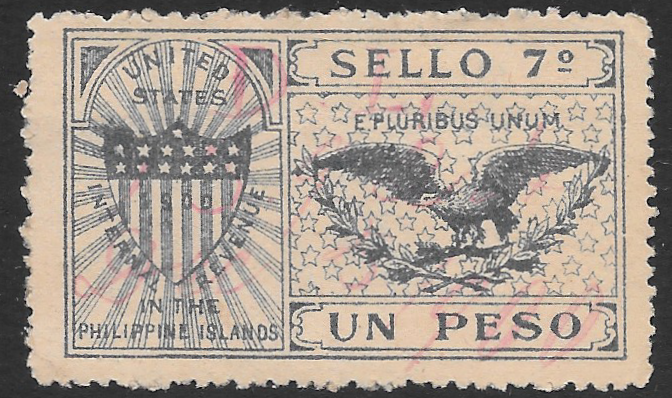
.png)
